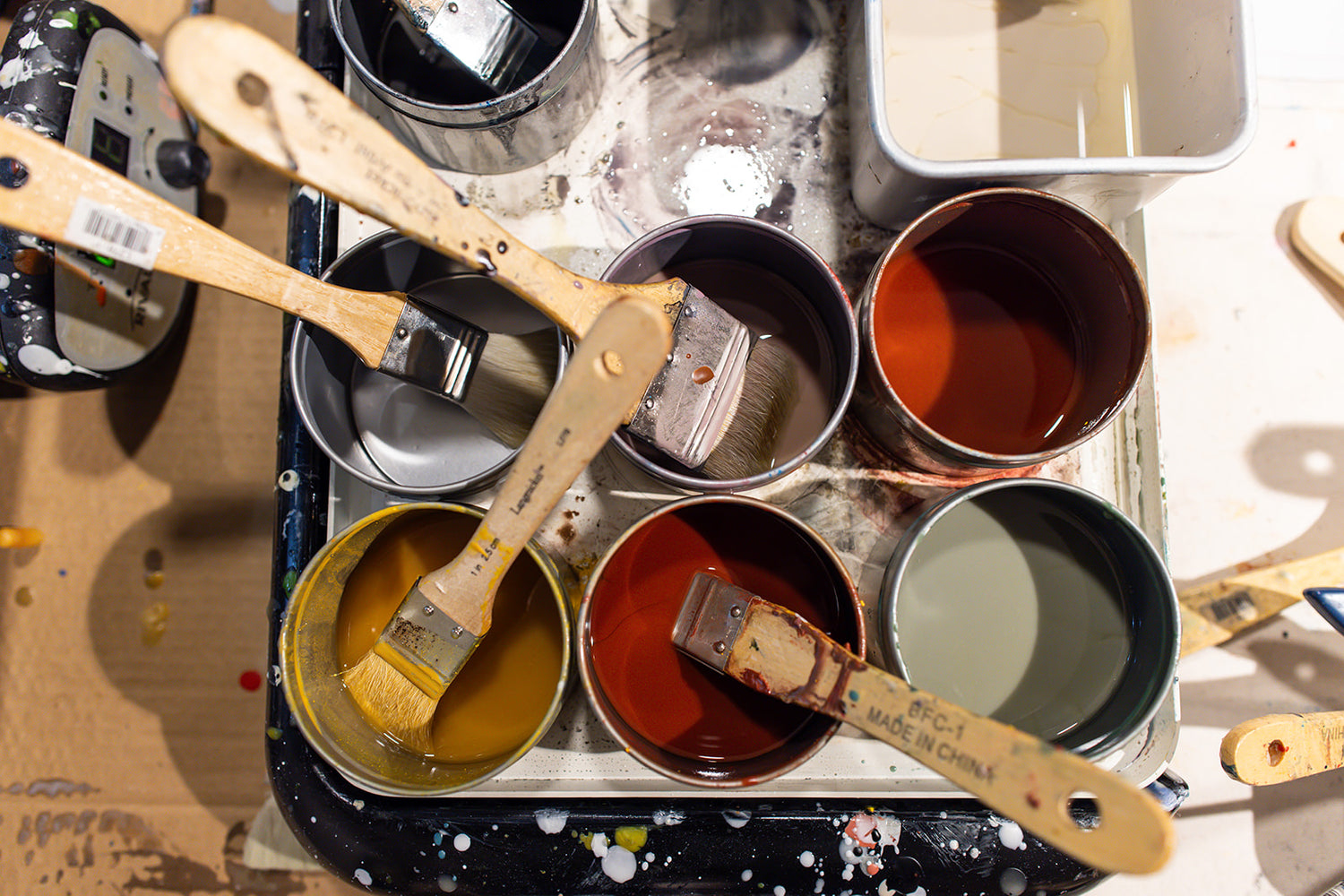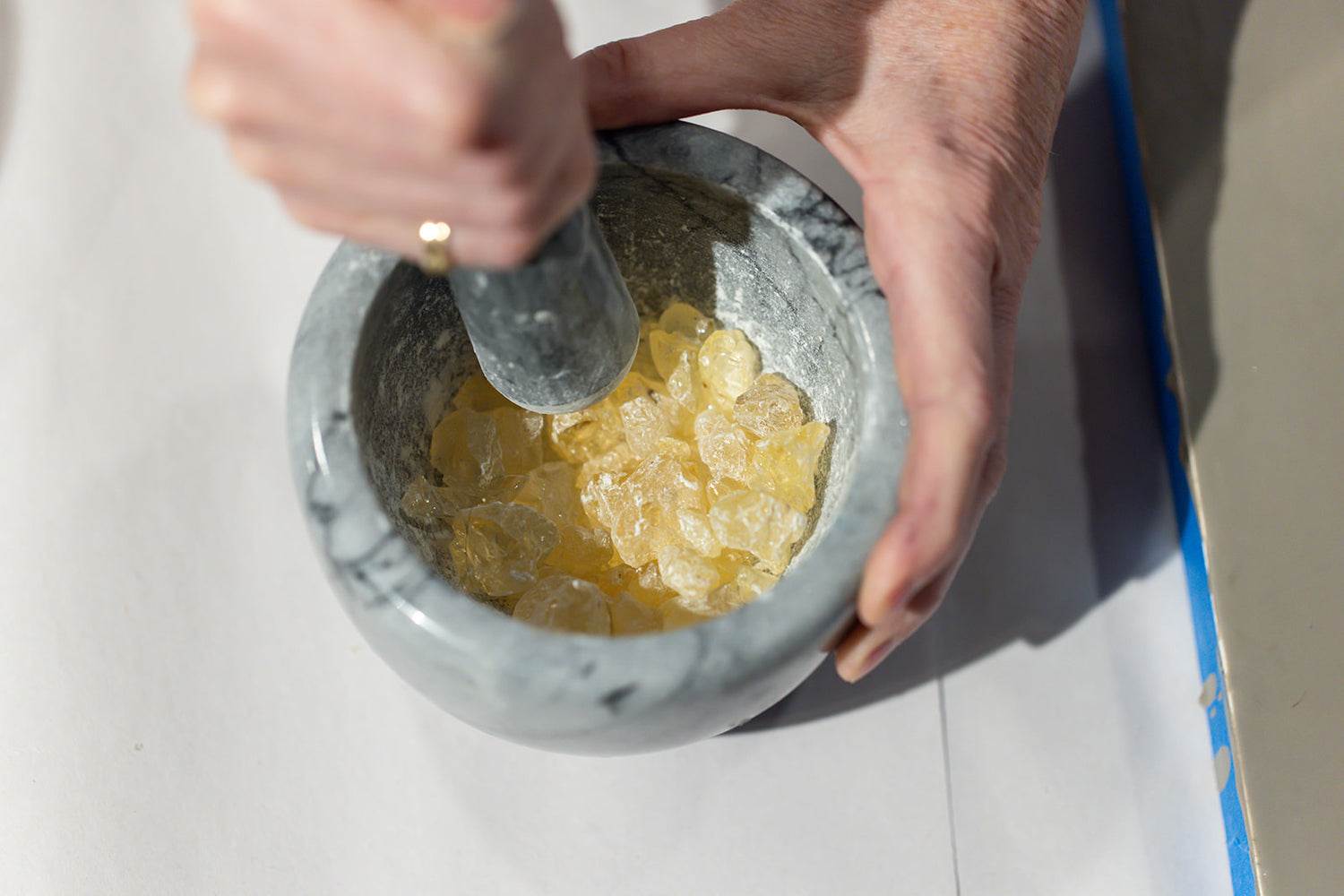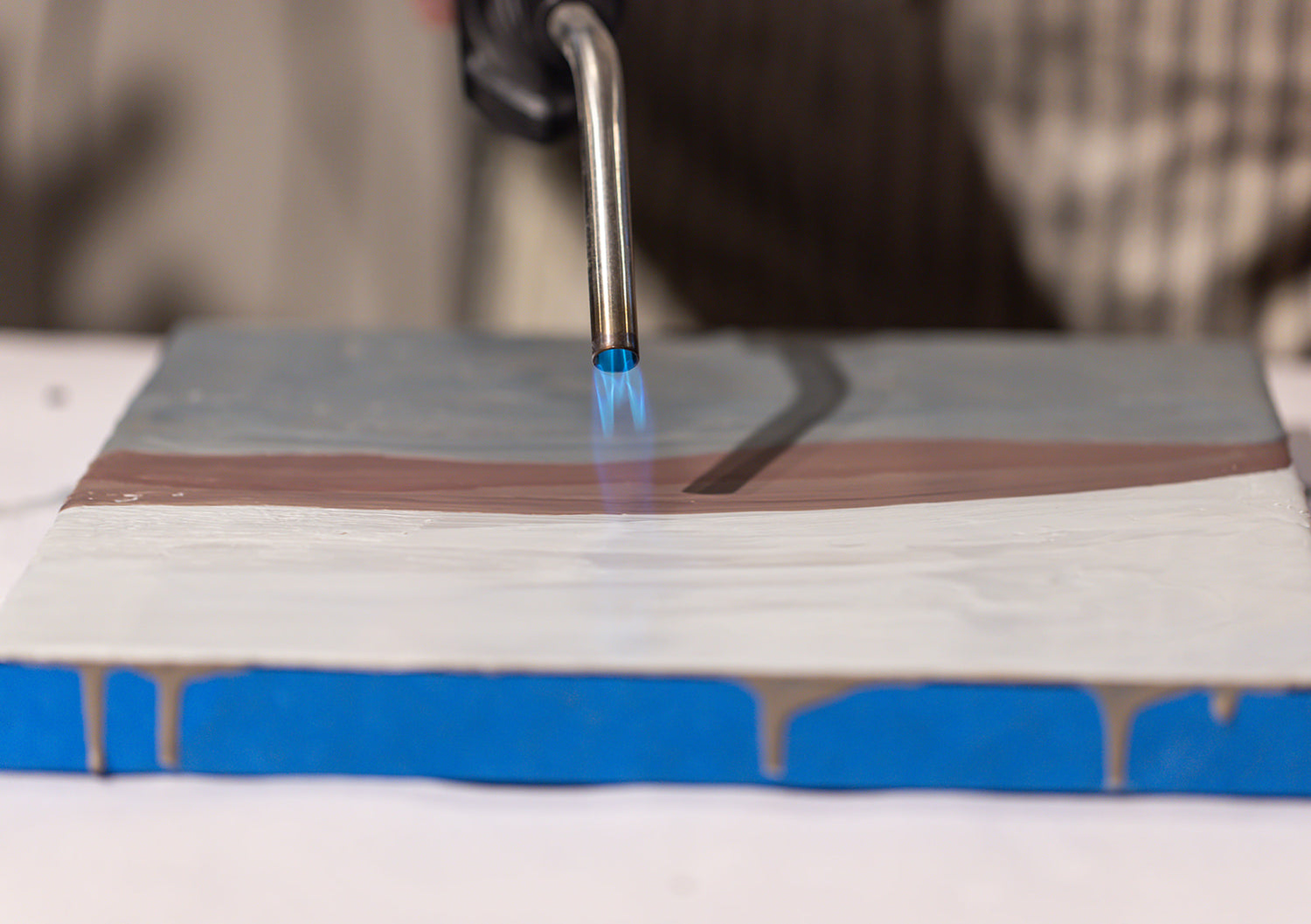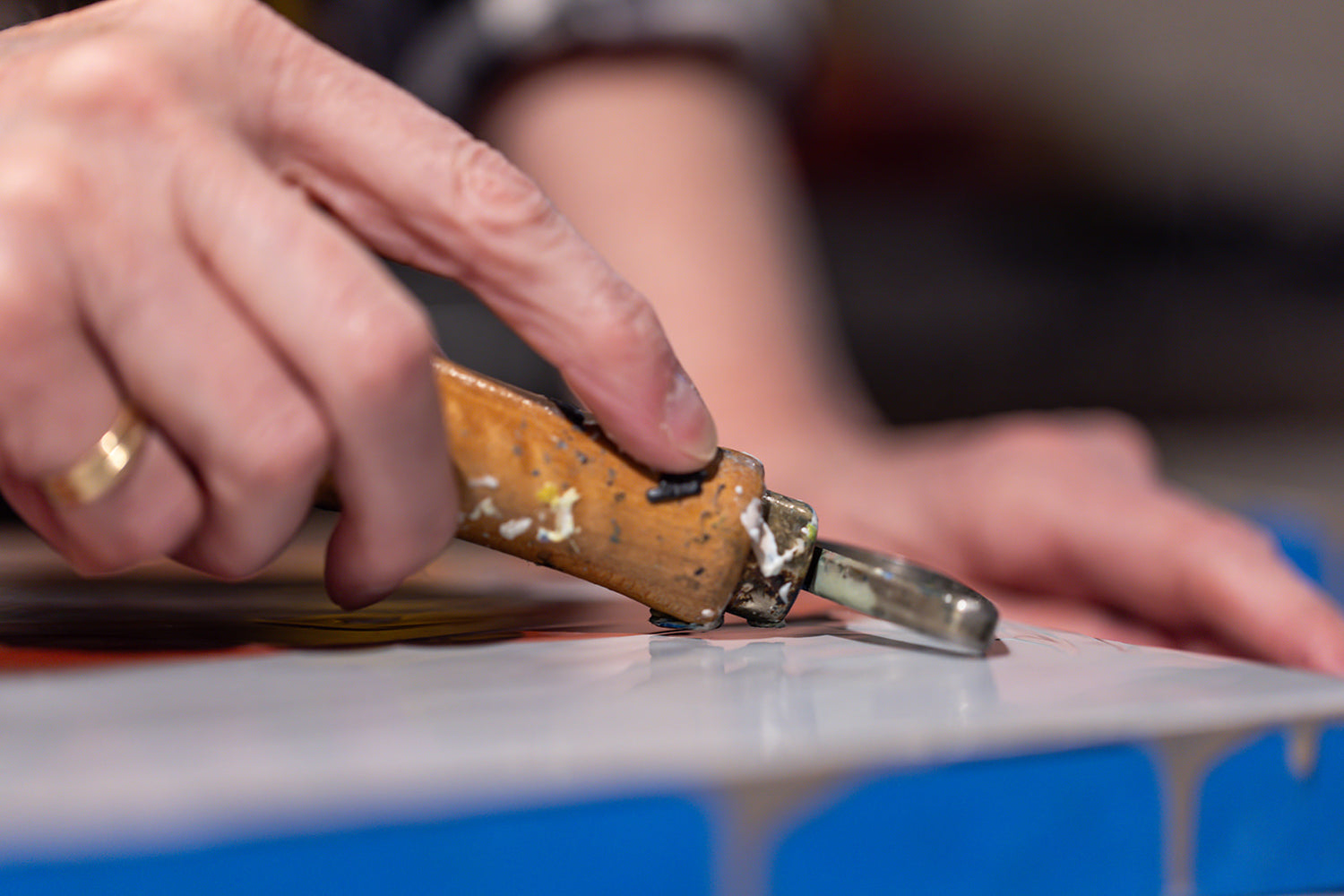
Encaustic Painting
Encaustic painting is an ancient technique that involves fusing layers of molten beeswax, resin, and pigment to create rich, luminous surfaces. The process allows for texture, depth, and intricate layering, resulting in dynamic, one-of-a-kind artworks.

History & Origins
Encaustic painting dates back over 2,000 years, first used by the ancient Greeks and Egyptians. It was famously employed in Fayum mummy portraits, preserving strikingly lifelike images for centuries. The technique was also used for waterproofing ships and decorating temples, showcasing its durability and versatility.

The Process
Encaustic painting involves melting beeswax mixed with resin and pigment, applying it in layers, and fusing it with heat. This process creates a rich, luminous surface with unique textures and depth. Unlike other mediums, encaustic does not require varnish and naturally resists moisture, making it a long-lasting art form.

Creative Possibilities
One of the most exciting aspects of encaustic painting is its versatility. Artists can carve, sculpt, layer, or embed materials such as paper, fabric, or metal into the wax. The ability to rework and fuse layers with heat allows for dynamic compositions, making every piece a one-of-a-kind fusion of history and innovation.